- 60 Posts
- 96 Comments
0, I’m just raw dogging /all (minus whomever .world is defederated from)
Med student here. I probably would’ve failed a lot of in house exams/step 1 if I didn’t use anki. IMO it’s best for solidifying knowledge and quick recall of facts, but doing a shitload of practice questions is the best way to apply what you’ve memorized through anki (this last bit is most applicable to med school/mcat prep).
Really the main cost with it is your time. If you miss a day or two it can be daunting to get back in the groove and work on your review backlog. I usually have enough downtime during the day and time on the shitter to get through my reviews + whatever new cards I add. Anki itself is free but they do have a paid iOS app that I got just to use whenever I had a few mins of spare time.
As for the learning curve, this will vary if you’re making your own cards vs using a premade deck for a large standardized exam. Once you know the formatting it isn’t that difficult to make cloze cards for what you’re trying to learn.
- lefty7283@lemmy.worldtoWorld News@lemmy.world•4 space station fliers return to Earth after record-setting 235-day missionEnglish18·10 days ago
The starliner astronauts are still up there (and will be until they return on the crew 9 capsule in February). This is the crew that went up before them returning to earth
- lefty7283@lemmy.worldtoSpaceX@sh.itjust.works•Starship IFT-5 Launch Thread! (First booster catch with chopsticks)English11·22 days ago
Holy fuck they did it
He’s just a skeegy little guy
- lefty7283@lemmy.worldtoCasual Conversation @lemm.ee•Pets Sunday - how are they doing?English2·29 days ago
Mildew is ‘eepin
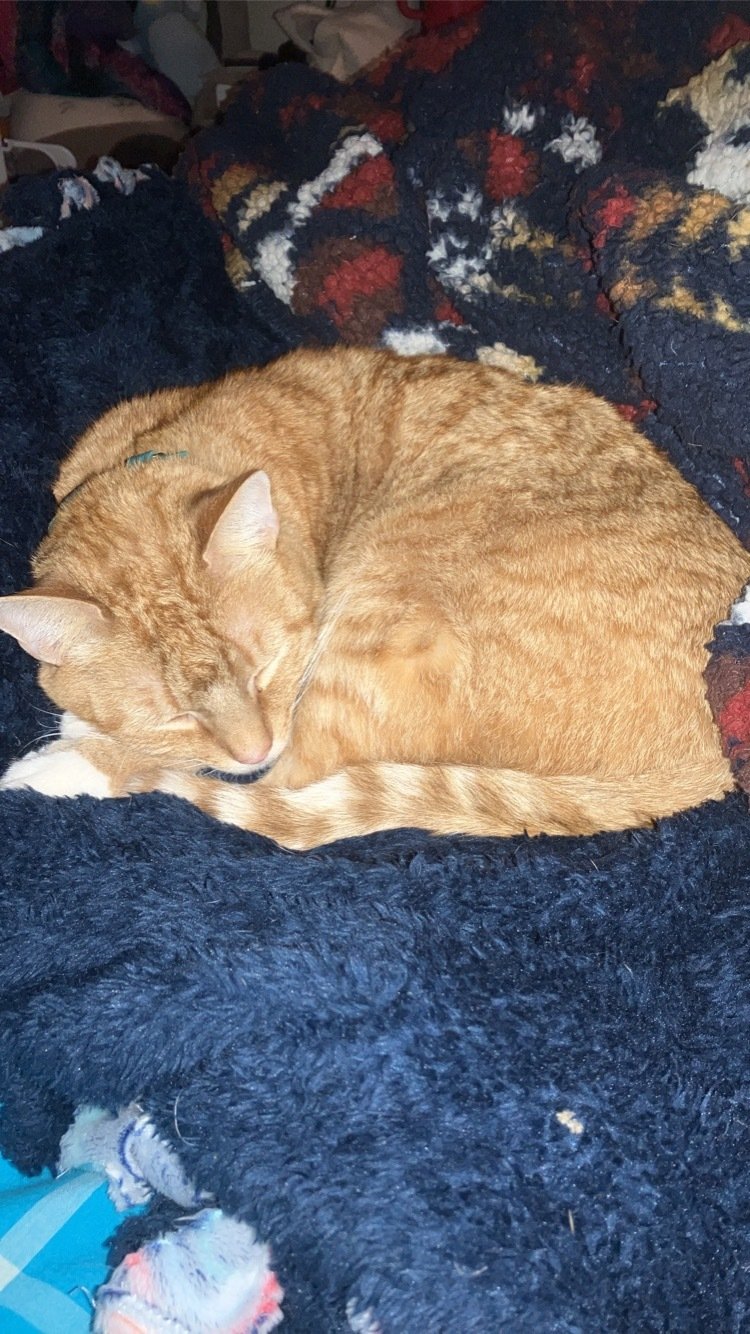
- lefty7283@lemmy.worldtoAsk Lemmy@lemmy.world•What happened on your worst birthday?English8·1 month ago
Got the flu and had to cancel my birthday movie party. Most of my friends went to go see the movie anyway. It was the Bee Movie
- lefty7283@lemmy.worldtoSpaceX@sh.itjust.works•Polaris Dawn | Views from Dragon in flightEnglish3·1 month ago
That shot of the forward thrusters is great!
- lefty7283@lemmy.worldtoSpace@lemmy.world•Starlink is increasingly interfering with astronomy, scientists sayEnglish10·2 months ago
What focal length do you normally shoot at? My rig is at 610mm and I get satellite trails mostly around dusk/dawn, but they all get rejected out during stacking
NGC 4490 is a galaxy colliding with the smaller NGC 4485 galaxy, and both are about 25 million light years away. This image was taken with a monochrome camera through filters for luminance (all visible light), red, green, blue, and Hydrogen-alpha (656nm), which were combined into a color image. The Hydrogen-alpha was combined with red (described below) to make the HaLRGB image. The pink Ha regions are star forming nebulae within the galaxies. This got cropped out of the final pic, but I ended getting some gorgeous diffraction spikes on this star near the edge of the full FOV
Places where I host my other images:
-
TPO 6" F/4 Imaging Newtonian
-
Orion Sirius EQ-G
-
ZWO ASI1600MM-Pro
-
Skywatcher Quattro Coma Corrector
-
ZWO EFW 8x1.25"/31mm
-
Astronomik LRGB+CLS Filters- 31mm
-
Astrodon 31mm Ha 5nm, Oiii 3nm, Sii 5nm
-
Agena 50mm Deluxe Straight-Through Guide Scope
-
ZWO ASI-120MC for guiding
-
Moonlite Autofocuser
Acquisition: 27 hours 37 minutes (Camera at half Unity Gain, -15°C)
-
Ha - 128x360"
-
Lum - 464x60"
-
Red - 152x60"
-
Green - 150x60"
-
Blue - 123x60"
-
Flats- 30 per filter
-
24 JimmyFlats per broadband filter
Capture Software:
- Captured using N.I.N.A.
PixInsight Processing:
-
BatchPreProcessing (with premade JimmyFlats)
-
StarAlignment
-
ImageIntegration
-
DrizzleIntegration (2x, Var β=1.5)
-
DynamicCrop
-
DynamicBackgroundExtraction
duplicated each image and removed stars via StarXterminator. Ran DBE to generate background model. model subtracted from original pic using the following PixelMath (math courtesy of /u/jimmythechicken1)
$T * med(model) / model
Luminance:
-
BlurXTerminator
-
ArcsinhStretch + histogramtransformation to bring nonlinear
RGB:
-
ChannelCombinaiton to combine monochrome R, G, B stacks into color image
-
SpectroPhotometricColorCalibration
-
BlurXTerminator (correct only mode)
-
HSV Repair
making clean Ha
loosely following this guide
This basically subtracts any broadband signal from the Ha pic, leaving only the Ha emission, which is then combined in with the red and a little bit of the blue channels
- PixelMath to isolate just Ha
Ha-Q * (Red-med (Red)), Q=0.75
- PixelMath to add Ha into RGB image
Red = $T+B*(Ha_Clean - med(Ha_Clean))
Green = $T
Blue = $T+B0.2(Ha_Clean - med(Ha_Clean))
B variable = 0.6 (this controls how strongly the Ha is added)
Nonlinear
-
ArcsinhStretch + histogramtransformation to bring HaRGB image nonlinear
-
MLT for large scale chrominance noise reduction
-
shitloads of curve transformations to adjust lightness, contrast, saturation, etc (with various luminance and star masks)
-
slight SCNR to remove some greens
-
LRGBCombination with stretched Luminance
-
DeepSNR
-
more curves
-
ColorSaturation to slightly desaturate the Ha regions (they were very pink compared to the rest of the galaxy
-
slight noisexterminator
-
LocalHistogramEqualization
-
even more curves
-
Resample to 75%
-
DynamicCrop onto just the galaxy
-
annotation
-
- lefty7283@lemmy.worldtoRelationship Memes@lemmyis.fun•Married people, where do you land?English4·2 months ago
I guess my astrophotography hobby has cancelled out my drinking and porn hobbies lol
- lefty7283@lemmy.worldtoTechnology@lemmy.world•FAA grounds SpaceX after rocket falls over in flames at landingEnglish7·2 months ago
Iirc the original goal was ‘at least 10’ but maybe up to 100 flights for a booster. No way to really know without flying them a lot
It’s definitely real, at least for the amateur astronomy subs I (used to) mod. I suspect a lot of the traffic to askastrophotography or telescopes is from people googling stuff and browsing though mobile web, but since /r/astrophotography is just photos, most are just on the app
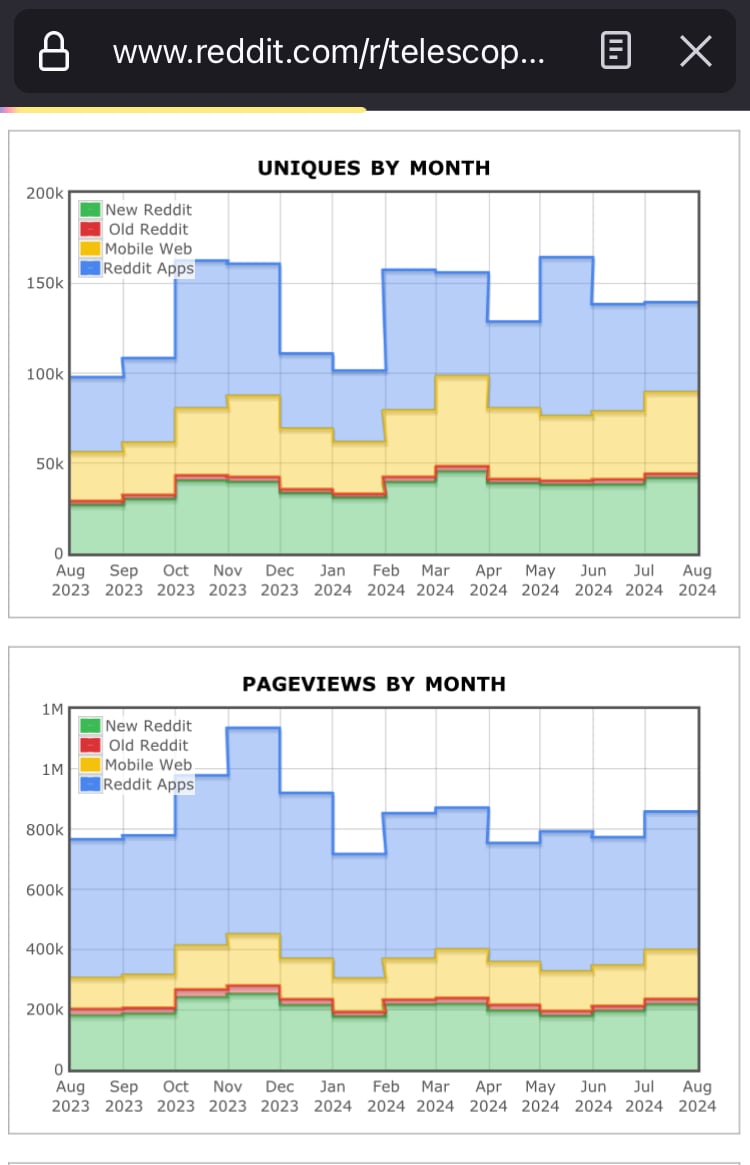
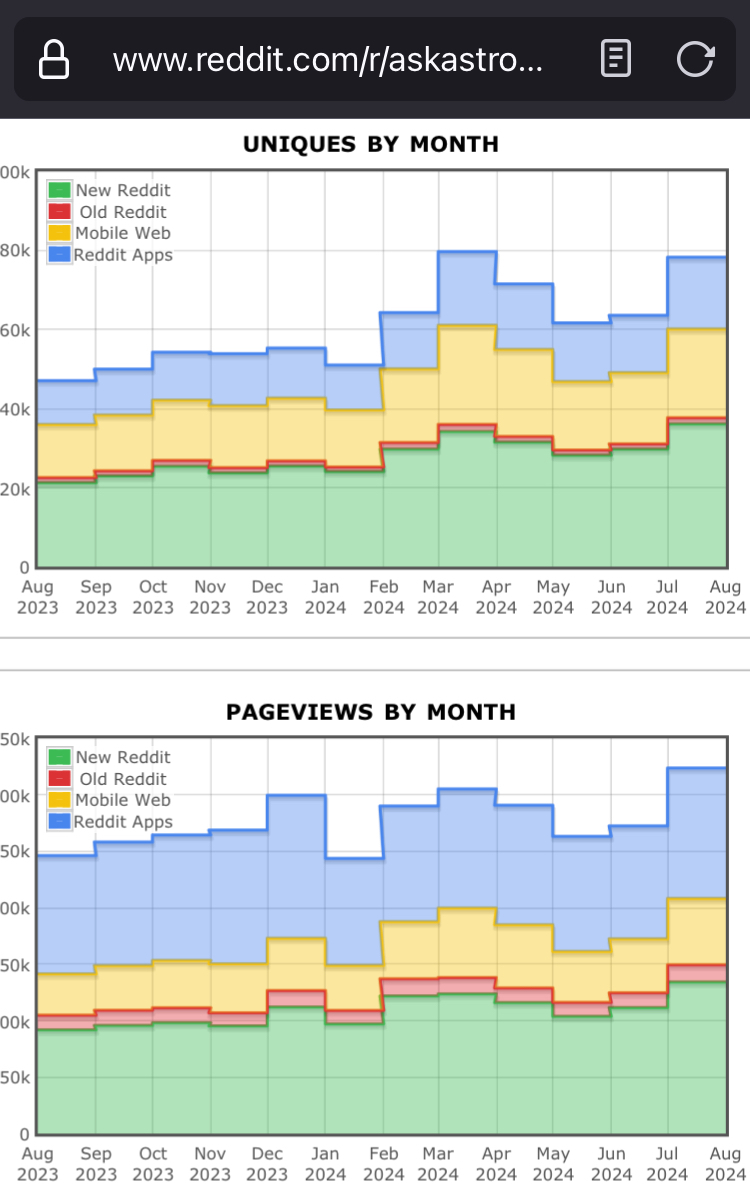
Probably varies a bit from sub to sub, but old reddit users are a clear minority. The vast majority use the app
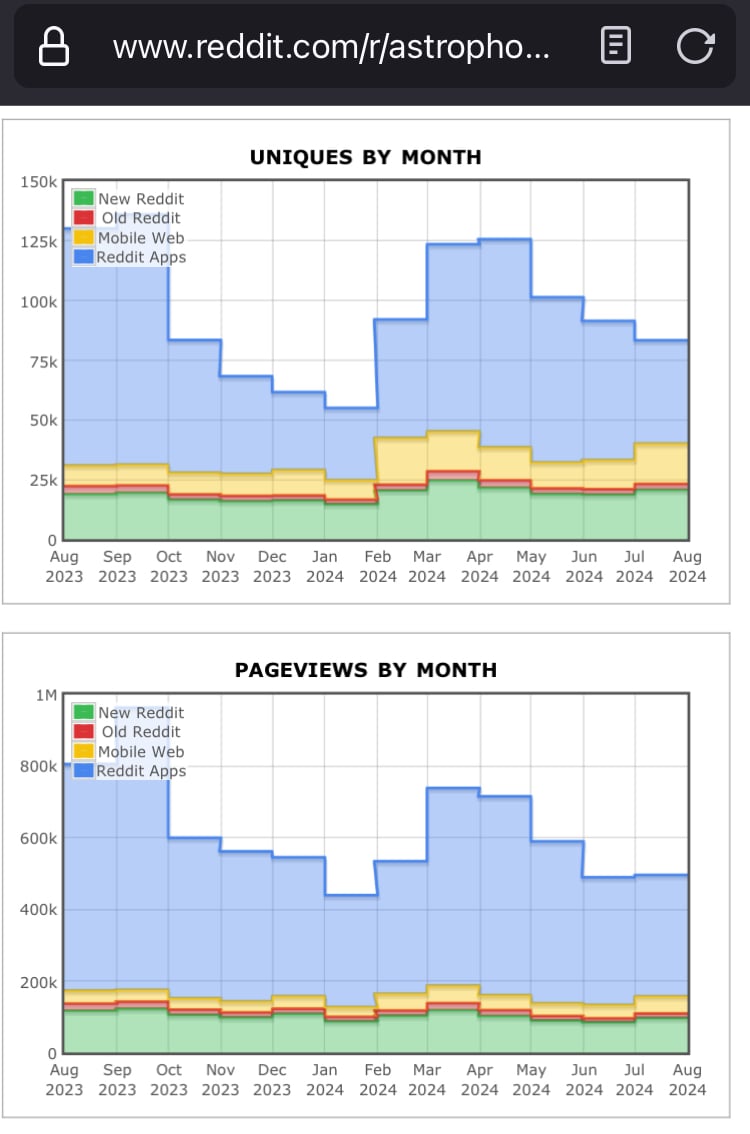
- lefty7283@lemmy.worldtoCasual Conversation @lemm.ee•Pets Sunday - how are they doing?English1·2 months ago
Mildew is trying to sleep in today
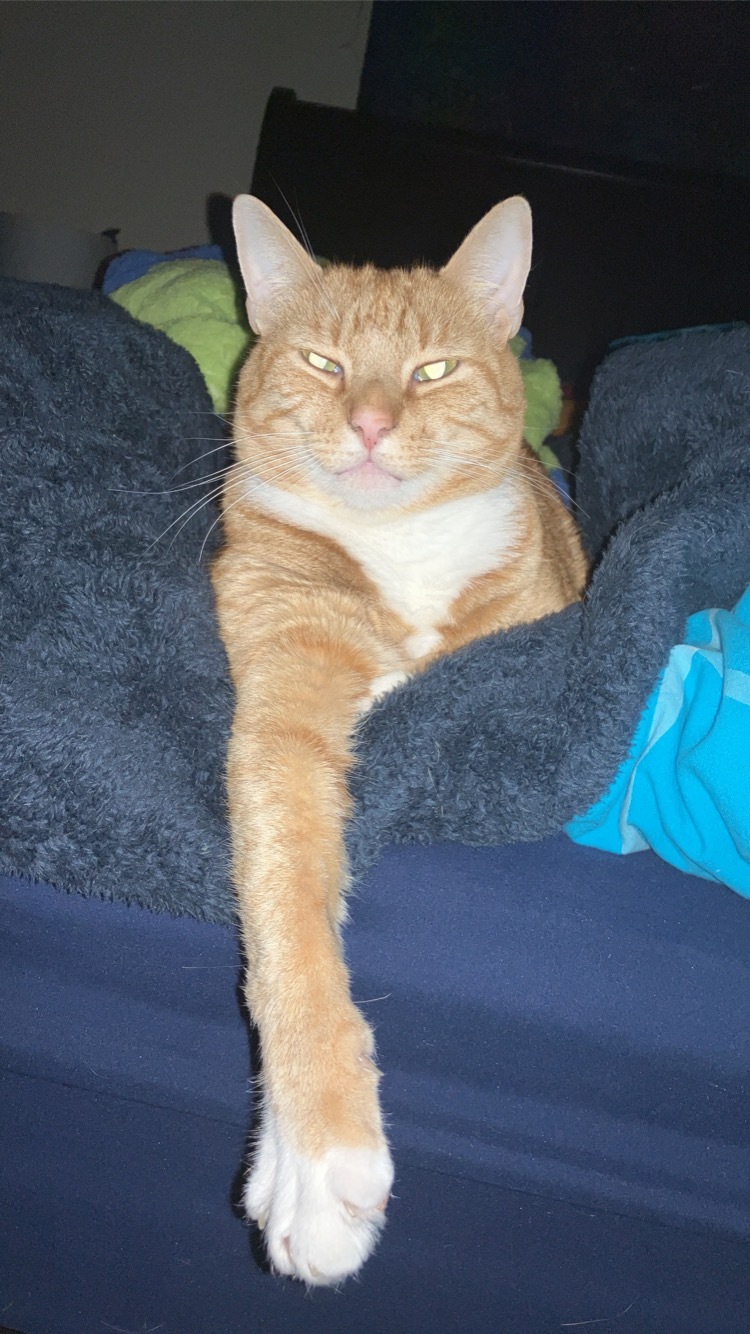
- lefty7283@lemmy.worldtoNews@lemmy.world•NASA says astronauts stuck in space will not return on Boeing capsule, will wait for SpaceX craftEnglish3·2 months ago
NASA is still doing a seat exchange and launching Johnny Kim on the next Soyuz in March, but it looks like it’ll be just Russians on at least the next 2 Soyuz’s after that
It may not be as big or well known as the other well known cluster in Hercules (M13), but it sure looks nice. Captured over 4 nights in July/August 2024 from a Bortle 9 zone
Places where I host my other images:
-
TPO 6" F/4 Imaging Newtonian
-
Orion Sirius EQ-G
-
ZWO ASI1600MM-Pro
-
Skywatcher Quattro Coma Corrector
-
ZWO EFW 8x1.25"/31mm
-
Astronomik LRGB+CLS Filters- 31mm
-
Astrodon 31mm Ha 5nm, Oiii 3nm, Sii 5nm
-
Agena 50mm Deluxe Straight-Through Guide Scope
-
ZWO ASI-120MC for guiding
-
Moonlite Autofocuser
Acquisition: 6 hours 55 minutes (Camera at half Unity Gain, -15°C)
-
Lum - 209x60"
-
Red - 78x60"
-
Green - 62x60"
-
Blue - 66x60"
-
Flats- 30 per filter
-
24 JimmyFlats per filter
Capture Software:
- Captured using N.I.N.A.
PixInsight Processing:
-
BatchPreProcessing (with premade JimmyFlats)
-
StarAlignment
-
ImageIntegration
-
DrizzleIntegration (2x, Var β=1.5)
-
DynamicCrop
-
DynamicBackgroundExtraction
duplicated each image and removed stars via StarXterminator. Ran DBE with a shitload of points to generate background model. model subtracted from original pic using the following PixelMath (math courtesy of /u/jimmythechicken1)
$T * med(model) / model
Luminance:
-
BlurXTerminator (correct only mode)
-
ArcsinhStretch + histogramtransformation to bring nonlinear
RGB:
-
ChannelCombinaiton to combine monochrome R, G, B stacks into color image
-
BlurXTerminator (correct only mode)
-
SpectroPhotometricColorCalibration
-
HSV Repair
-
ArcsinhStretch + histogramtransformation to bring nonlinear
-
Curves to saturate it a little
-
MLT for large scale chrominance noise reduction
Nonlinear:
-
LRGBCombination with stretched L as luminance
-
DeepSNR Noise reduction
-
Several CurveTransformations to adjust lightness, contrast, colors, saturation, etc.
-
Invert > SCNR > invert > SCNR to remove some greens and magentas
-
More curves
-
A little bit of noiseXterminator
-
DynamicCrop in on the clustert
-
Resample to 75%
-
Annotation
-
A lot of those tubes run on the inside of the engine. They’re 3D printed into the engine walls as it’s being made
- lefty7283@lemmy.worldtoTechnology@lemmy.world•Some subreddits could be paywalled, hints Reddit CEOEnglish12·3 months ago
Oh no! Where will I go to see OF spam bots now???
Decided to just shoot a semi-random part of Cygnus. The large extended Ha region in Cygnus is unofficially called Smaug, and this is a photo specifically of the area around LBN 325/326. The nebulosity in this pic is false color, but the stars are true color RGB. I really love how this turned out with the narrowband palette, especially with the Oiii region on the right side looking almost like a true color Ha region. Captured over a shitload of nights from Aug-Oct 2024 from a bortle 9 zone.
Places where I host my other images:
Flickr | Instagram
Equipment:
TPO 6" F/4 Imaging Newtonian
Orion Sirius EQ-G
ZWO ASI1600MM-Pro
Skywatcher Quattro Coma Corrector
ZWO EFW 8x1.25"/31mm
Astronomik LRGB+CLS Filters- 31mm
Astrodon 31mm Ha 5nm, Oiii 3nm, Sii 5nm
Agena 50mm Deluxe Straight-Through Guide Scope
ZWO ASI-290mc for guiding
Moonlite Autofocuser
Acquisition: 57 hours 40 minutes (Camera at -15°C), NB exposures at unity gain and BB at half unity
Ha - 111x600"
Oiii - 127x600"
Sii - 94x600"
R - 48x60"
G - 48x60"
B - 44x60"
Darks- 30
Flats- 30 per filter
Capture Software:
PixInsight Preprocessing:
BatchPreProcessing
StarAlignment
Blink
ImageIntegration per channel
DrizzleIntegration (2x, Var β=1.5)
Dynamic Crop
DynamicBackgroundExtraction
Narrowband Linear:
Blur and NoiseXTerminator
StarXterminator to completely remove stars (to be later replaced by the RGB ones)
HistogramTransformation to stretch nonlinear
RGB Linear:
ChannelCombination to combine monochrome R G and B frame into color image
SpectroPhotometricColorCalibration
BlurXTerminator for star sharpening (correct only)
HSV Repair
StarXterminator to generate a stars-only image
ArcsinhStretch + HT to stretch nonlinear (to be combined with starless narrowband image later)
Invert > SCNR > invert to remove magentas
Curves to saturate the stars a bit more
Nonlinear:
NoiseX again
Shitloads of Curve Transformations to adjust lightness, hues, contrast, saturation, etc
more curves
Extract L --> LRGBCombination for chrominance noise reduction
even more curves
Pixelmath to add in the stretched RGB stars only image from earlier
Couple final curves
Resample to 60%
Annotation